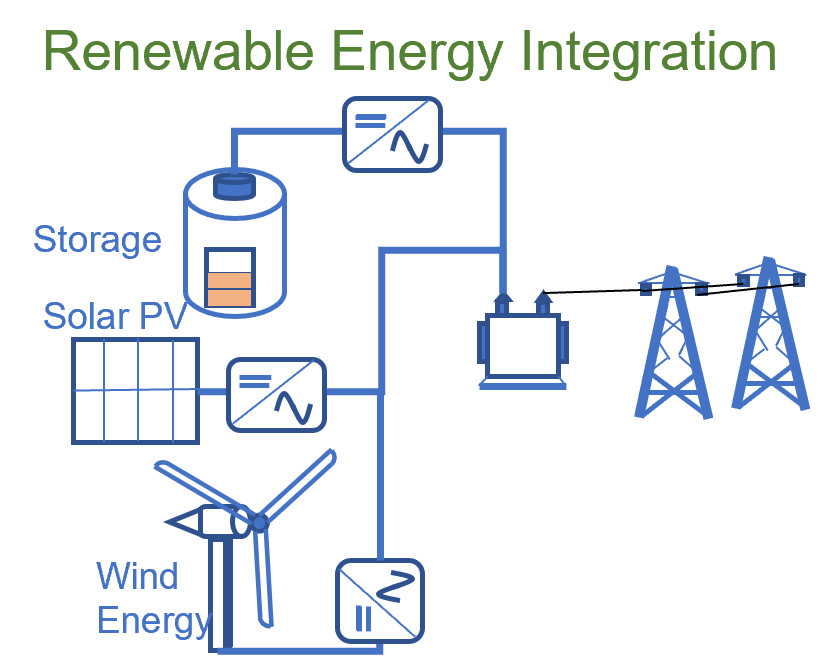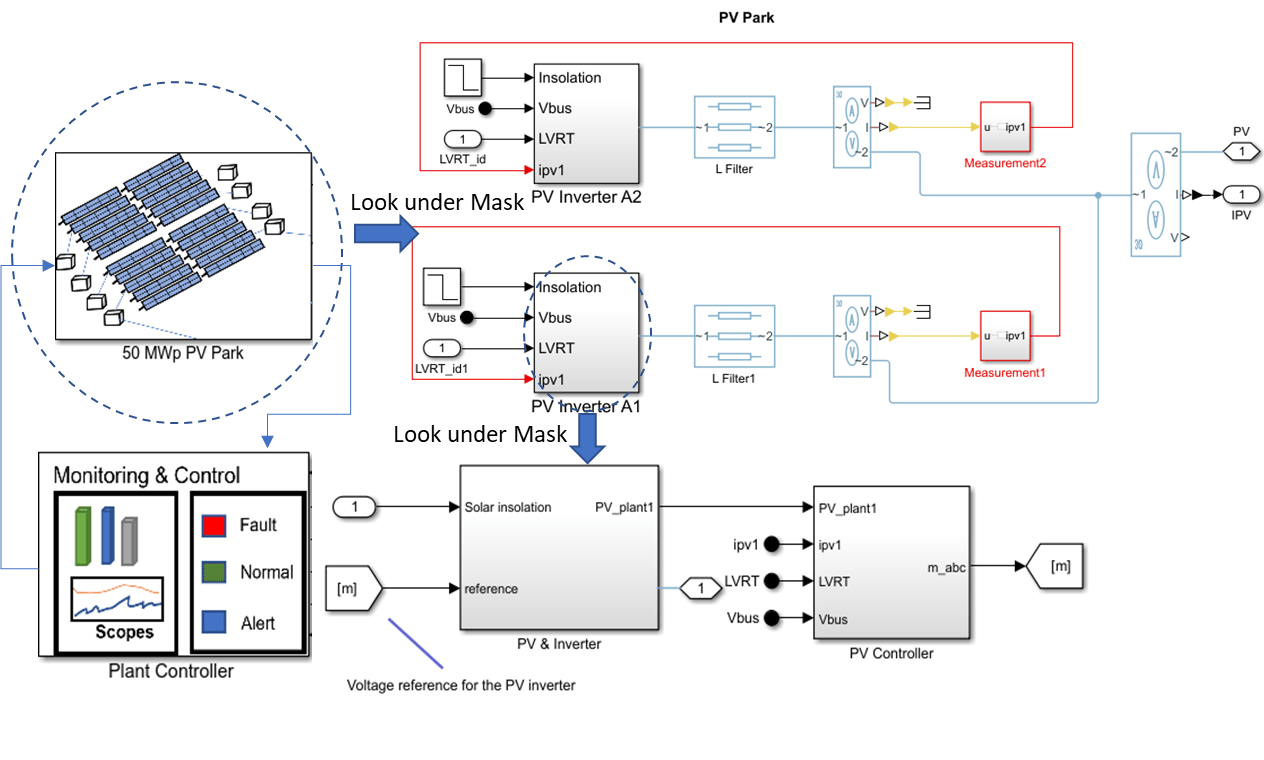Evaluate Performance of Grid-Forming Battery Energy Storage Systems in Solar PV Plants
This example shows how to evaluate the performance of a grid-forming (GFM) battery energy storage system (BESS) in maintaining a stable power system with high solar photovoltaic (PV) penetration. You can evaluate the power system during both normal operation or contingencies, like large drops in PV power, significant load changes, grid outages, and faults. You can download this model in MATLAB® or access it from MATLAB Central File Exchange and GitHub®.
Example Overview
In this example, you learn how to:
Integrate a PV plant and a BESS unit to a power transmission system with a conventional source.
Simulate different operating scenarios, including solar power variation, large load change, grid outage, temporary fault, and permanent fault.
Verify the compliance of the designed PV plant, BESS unit, and controllers against the performance requirements of the IEEE 2800 standard.
Evaluate the BESS response with GFM and grid-following (GFL) controllers under varying levels of grid strength at the point of interconnection (POI).
For more information, follow these steps to explore the overview that opens in your web browser or see Renewable Energy Integration Design with Simscape (MATLAB Central File Exchange).

Download Files
Clone the up-to-date repository in the current folder using the gitclone function.
gitclone("https://github.com/simscape/Renewable-Energy-Integration-Simscape");Alternatively, you can download the latest files using these options.
Download ZIP files of this project from Renewable Energy Integration Design with Simscape (MATLAB Central File Exchange).
Clone the Git™ repository from Renewable Energy Integration Design with Simscape (GitHub).
Open Project
After you use the gitclone function, MATLAB creates a new folder in the current folder. This example uses projects to manage the supporting files. Open the RenewableEnergyIntegrationSimscape project file. If you have any projects open, MATLAB closes them before loading this project. Configuring the project environment takes several minutes because the model has hundreds of supporting files. Click the Learn More hyperlink on the top-level model canvas to open an overview that helps you explore the subsystems and the construction of the model. The overview also shows you the main simulation results.
openProject("Renewable-Energy-Integration-Simscape");Explore Project
Distribution and Transmission System
The top-level model includes a PV plant and a BESS unit, connected to a medium-voltage (MV) network through a 4.16 kV/24.9 kV transformer. The PV plant inverters operate at their maximum power point (MPP) by using a GFL controller. The BESS inverter operates as a GFM unit, using a virtual synchronous-machine-based GFM controller.
A three-phase load connects to the MV feeder at 4.16 kV. The 24.9 kV/230 kV transformer connects the MV network to conventional generation units through a high-voltage (HV) transmission line.

PV Park System
Inside the BESS & PV PARK subsystem, look under the mask of the 50 MWp PV Park subsystem. This subsystem models the PV plant. The PV plant comprises of two three-phase central inverters. Each PV inverter can deliver a maximum power of 50 MW at a temperature of 25 and solar insolation of 1000 . A 4.16 / 24.9 kV distribution transformer connects the PV inverters to a medium voltage power network. The PV inverter operates at its maximum power point (MPP).

BESS System
The BESS comprises a grid-scale battery unit that has a storage capacity of 60 MWhr with a maximum power of 35 MW. The BESS system integrates into the network through a two-stage power conversion process. The first stage of the power conversion process is a bidirectional DC-DC converter that maintains the battery DC link voltage. The second stage is the grid-side inverter, which controls the power flow between the BESS and the grid.

Performance of BESS After Sudden Change in PV Power
This figure shows the performance of the BESS unit after a sudden 50% reduction of the PV power output at 1.5 seconds. The BESS with the GFM control responds effectively during the disturbance. The BESS provides the inertial power and the primary response along with required reactive power to maintain stable system operation.

To find the latest examples from the MathWorks Simscape Team, see MathWorks Simscape Team on MATLAB Central.
